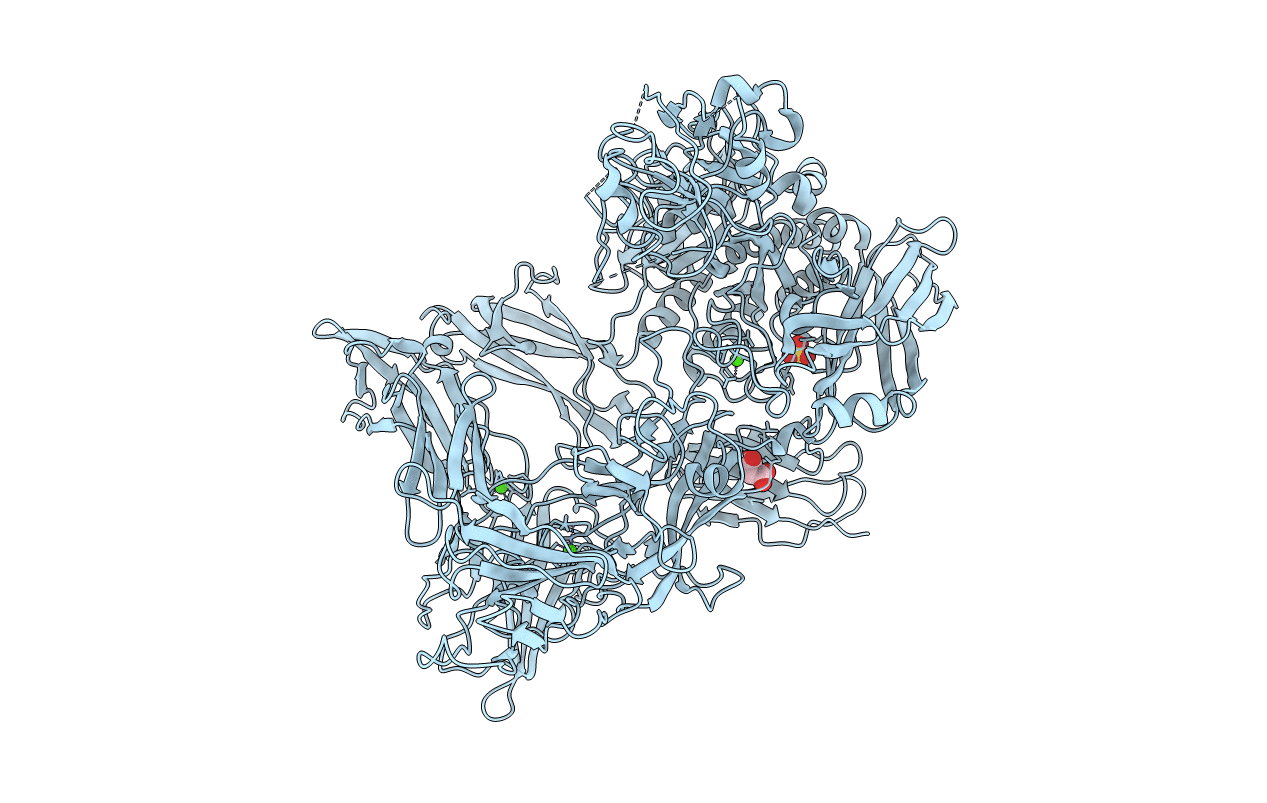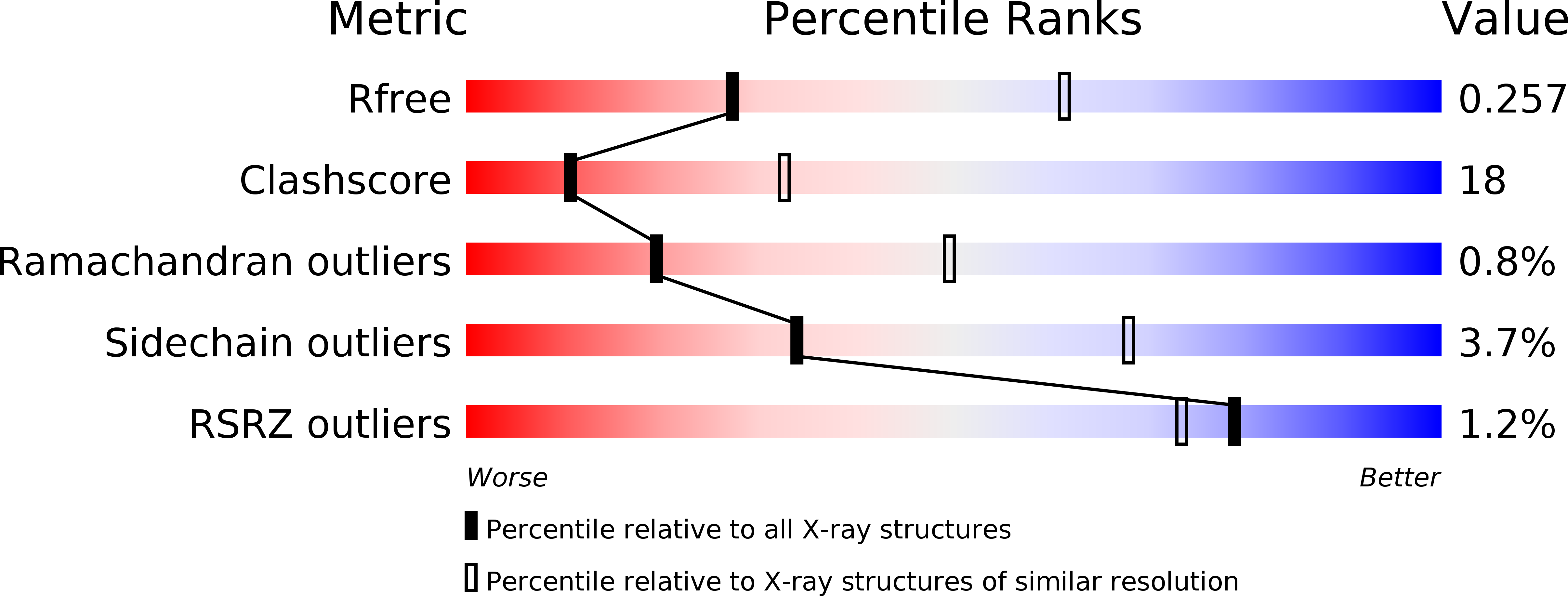
Deposition Date
2017-07-10
Release Date
2018-08-08
Last Version Date
2024-11-13
Entry Detail
PDB ID:
5XYR
Keywords:
Title:
Crystal structure of a serine protease from Streptococcus species
Biological Source:
Source Organism:
Streptococcus pyogenes (Taxon ID: 1314)
Host Organism:
Method Details:
Experimental Method:
Resolution:
2.80 Å
R-Value Free:
0.25
R-Value Work:
0.20
R-Value Observed:
0.21
Space Group:
P 62 2 2


